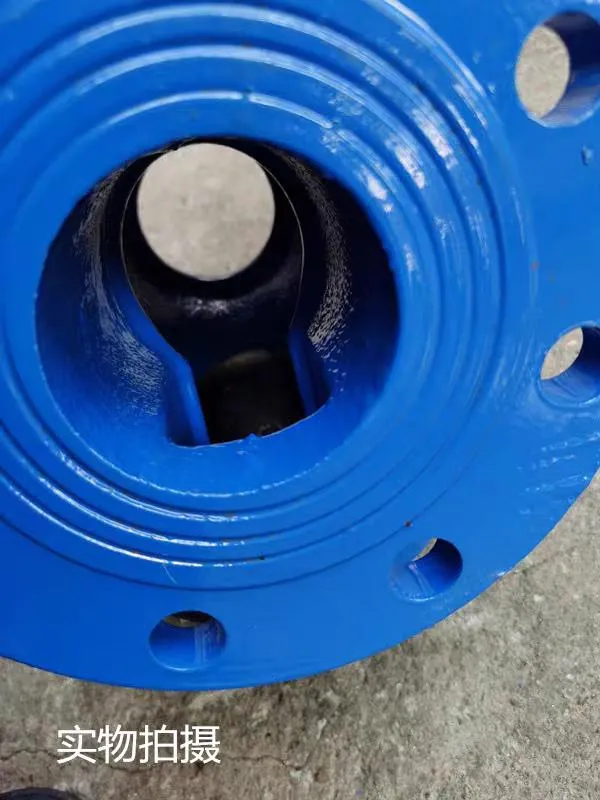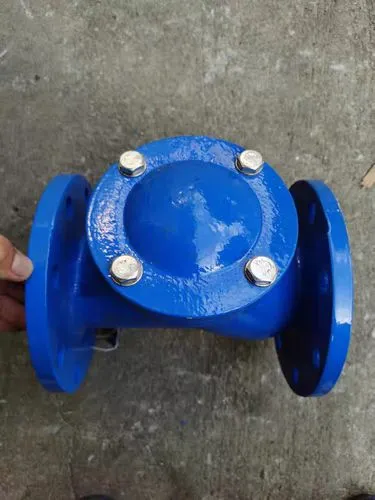ਜੂਨ . 20, 2025 09:27 ਸੂਚੀ 'ਤੇ ਵਾਪਸ ਜਾਓ
Material Selection for Ball Check Valves
Choosing the right materials for ball check valves is critical to ensuring their performance, durability, and reliability in industrial applications. These valves, designed to allow unidirectional flow and prevent backflow, are used in sectors ranging from oil and gas to water treatment and chemical processing. The material composition of the valve body, ball, and sealing components directly impacts its resistance to corrosion, temperature tolerance, and mechanical strength. This article explores material selection strategies for ball check valves, focusing on specific configurations such as 1 ball check valve, 2 ball check valve, and 4 ball check valve systems, while addressing common questions about their design and application.

Understanding the Role of Material in Ball Check Valve Performance
Ball check valves rely on a free-moving ball that seats against a sealing surface to block reverse flow. The choice of materials for the ball, valve body, and seat determines the valve’s compatibility with fluids, pressure ratings, and lifespan. For instance, stainless steel is widely used for its corrosion resistance, while polymers like PTFE (polytetrafluoroethylene) excel in chemical-heavy environments.
In high-pressure systems, hardened alloys or ceramics may be required to prevent deformation of the ball or seat. Conversely, in low-pressure water systems, brass or PVC offers a cost-effective solution. Material selection must also account for temperature extremes: metals like titanium perform well in high-heat scenarios, while elastomeric seals may degrade if exposed beyond their thermal limits.
Manufacturers producing ball check valves in bulk must balance performance requirements with material availability and cost-efficiency. Standardizing materials for common applications ensures consistency, while custom solutions cater to niche industries.
Key Considerations for 1 Ball Check Valve Material Selection
The 1 ball check valve, a single-ball design, is the most common configuration due to its simplicity and effectiveness. Material choices here prioritize fluid compatibility and mechanical resilience.
- Valve Body: Stainless steel (e.g., 316L) is ideal for corrosive fluids, while brass suits water and gas applications.
- Ball: Chrome-plated steel or silicon nitride (a ceramic) enhances wear resistance and reduces friction.
- Seat: PTFE provides a tight seal while resisting chemical degradation.
For example, in marine environments, a 1 ball check valve with a 316L stainless steel body and PTFE seat resists saltwater corrosion. In contrast, a brass-bodied valve with a rubber seat might be used in residential plumbing. Bulk manufacturing of 1 ball check valve units often leverages these standardized materials to meet diverse industry needs without compromising quality.

Optimizing Material Choices for 2 Ball Check Valve Systems
The 2 ball check valve incorporates two balls in series, offering redundancy and enhanced backflow prevention. This design is common in critical systems where failure could lead to contamination or equipment damage. Material selection here must address increased mechanical stress and potential wear from dual-ball movement.
- Valve Body: Duplex stainless steel provides higher strength for high-pressure applications.
- Balls: Tungsten carbide or ceramic balls minimize wear in abrasive fluid environments.
- Springs (if applicable): Inconel alloys retain elasticity under cyclic loading.
For instance, in hydraulic systems, a 2 ball check valve with tungsten carbide balls and a duplex stainless steel body ensures longevity despite frequent pressure surges. Bulk production of such valves requires precise material sourcing to maintain uniformity across large batches.
Advanced Material Solutions for 4 Ball Check Valve Applications
The 4 ball check valve, a complex configuration with four balls, is engineered for ultra-high-pressure or multi-directional flow control. These valves demand advanced materials capable of withstanding extreme operational stresses.
- Valve Body: Super alloys liketitanium is used in aggressive chemical or high-temperature environments.
- Balls: Silicon nitride or zirconia ceramics offer superior hardness and thermal stability.
- Seals: PEEK (polyether ether ketone) withstands temperatures up to 250°C and aggressive chemicals.
In aerospace fuel systems, a 4 ball check valve with a titanium body and ceramic balls ensures reliability under rapid pressure changes. Manufacturers producing these valves in bulk collaborate closely with material suppliers to ensure traceability and compliance with industry standards.

FAQs About Ball Check Valve Material Selection
What materials are recommended for a 1 ball check valve in high-temperature environments?
Stainless steel (grade 316 or 304) is ideal for the valve body, while ceramic balls and PEEK seals ensure thermal stability up to 400°C.
How does material choice affect the lifespan of a 2 ball check valve?
Durable materials like tungsten carbide balls and duplex stainless steel reduce wear, extending the valve’s lifespan even under cyclic pressure conditions.
Can a 4 ball check valve handle corrosive chemicals?
Yes, using super alloys like PTFE seals ensures compatibility with acids, alkalis, and solvents.
Is brass suitable for a 1 ball check valve in potable water systems?
Absolutely. Brass offers excellent corrosion resistance in water applications and meets NSF/ANSI standards for drinking water safety.
Why are ceramic balls used in high-end ball check valves?
Ceramics provide unmatched hardness, reducing friction and wear while maintaining performance in abrasive or high-pressure scenarios.
Material selection for ball check valves is a science that balances operational demands, environmental factors, and economic feasibility. Whether designing a 1 ball check valve for residential use or a 4 ball check valve for industrial extremes, understanding material properties ensures optimal performance. Manufacturers specializing in bulk production prioritize standardized, high-quality materials to deliver reliable valves that meet global industry standards. By aligning material choices with application requirements, end-users achieve longevity, safety, and efficiency in their fluid control systems.
-
Why Metric Trapezoidal Thread is Ideal for Precision Motion Controlਖ਼ਬਰਾਂAug.05,2025
-
The Unique Properties of a Block of Granite for Industrial Useਖ਼ਬਰਾਂAug.05,2025
-
The Role of Flanged Y Strainers in Preventing Pipeline Clogsਖ਼ਬਰਾਂAug.05,2025
-
The Importance of Regular Calibration for Master Ring Gagesਖ਼ਬਰਾਂAug.05,2025
-
How a Cast Iron Surface Table Enhances Accuracy in Manufacturingਖ਼ਬਰਾਂAug.05,2025
-
Comparing Different Check Valve Types for Optimal Flow Controlਖ਼ਬਰਾਂAug.05,2025
ਸੰਬੰਧਿਤ ਉਤਪਾਦ









